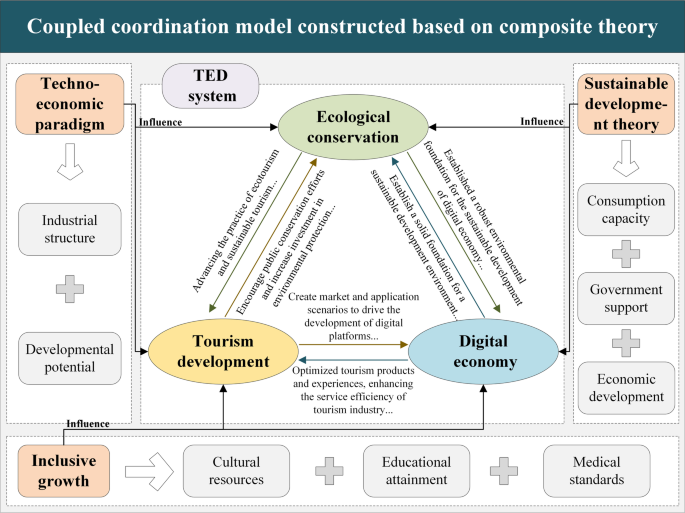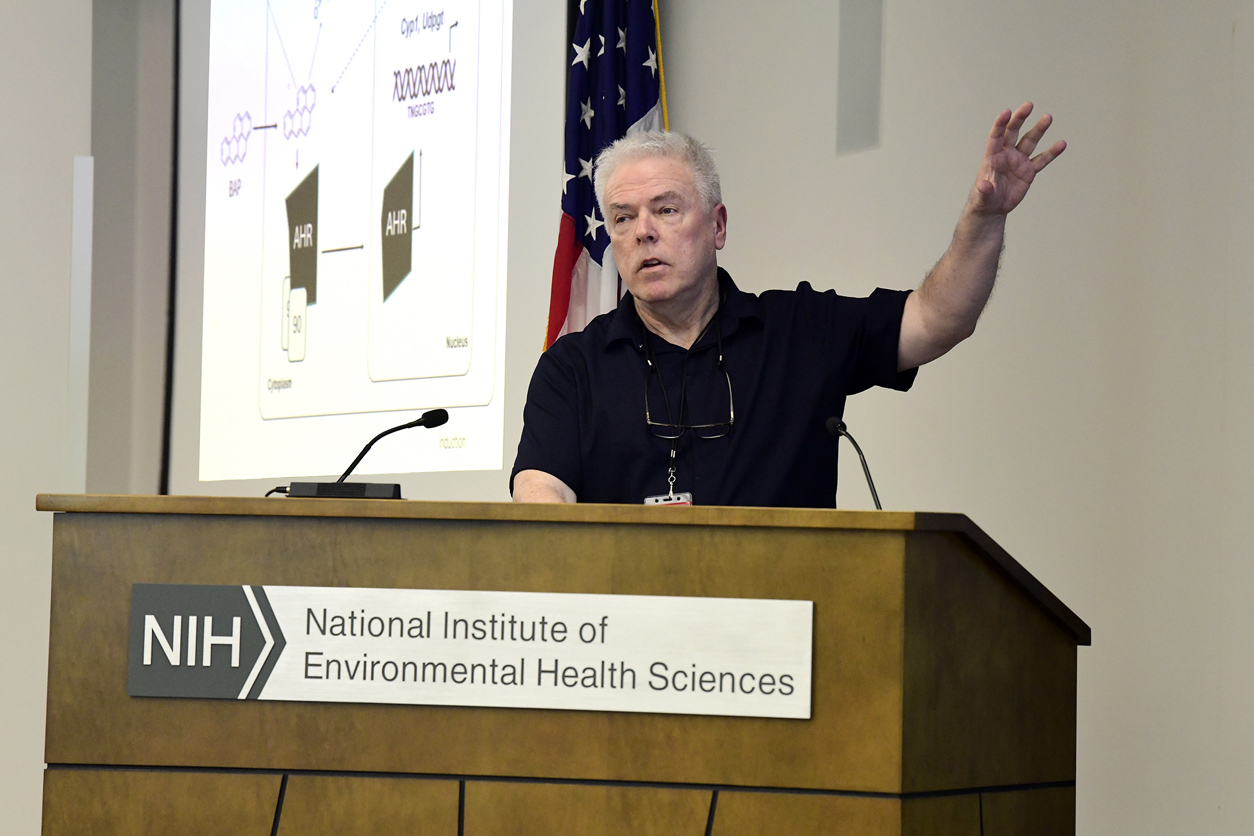Coupling coordination and driving mechanism between tourism development, ecological conservation and digital economy: insights from Chinese 278 cities – Nature

Report on the Coordinated Development of Tourism, Ecology, and the Digital Economy in China: An SDG-Focused Analysis
1.0 Introduction: Aligning Tourism with the Sustainable Development Goals (SDGs)
The global tourism industry presents a critical challenge to the achievement of the 2030 Agenda for Sustainable Development. While a driver for SDG 8 (Decent Work and Economic Growth), its expansion often leads to ecological degradation and resource over-exploitation, directly undermining SDG 13 (Climate Action), SDG 14 (Life Below Water), and SDG 15 (Life on Land). The digital economy, a catalyst for SDG 9 (Industry, Innovation, and Infrastructure), offers a transformative pathway to decouple tourism growth from environmental harm, promoting a low-carbon transition and contributing to SDG 11 (Sustainable Cities and Communities).
This report analyzes the coupling coordination among Tourism Development (TD), Ecological Conservation (EC), and the Digital Economy (DE) in China, a nation pivotal to global tourism and digital innovation. By examining the spatiotemporal dynamics of this “TED” system, the study provides insights into creating integrated policies that advance multiple SDGs simultaneously, addressing potential trade-offs and leveraging synergies. The analysis focuses on 278 Chinese cities from 2002 to 2022, seeking to answer three core questions:
- What are the regional distribution characteristics and inequalities (SDG 10) of the coupling coordination degree (CCD) within the TED system?
- What are the spatiotemporal evolution patterns of the TED system’s CCD, particularly in the context of major events like the COVID-19 pandemic?
- What internal and external factors influence the coordinated development of the TED system, and what measures can enhance its contribution to the SDGs?
2.0 Methodology for Assessing SDG Integration
To evaluate the complex interactions within the TED system and its alignment with sustainable development principles, a multi-model approach was employed. This framework allows for a comprehensive assessment of the system’s performance, spatial dynamics, and influencing factors.
- Coupling Coordination Degree Model (CCDM): Used to quantify the level of synergy between the tourism, ecological, and digital economy subsystems. A higher CCD indicates a more balanced and sustainable development path.
- Spatiotemporal Analysis Models: The Standard Deviation Ellipse (SDE) model and Exploratory Spatial Data Analysis (ESDA) were used to identify the geographical shifts, clustering, and spillover effects of the TED system’s coordination. This helps visualize regional progress and disparities related to SDG 10 and SDG 11.
- Obstacle and Driver Analysis Models: The Obstacle Degree Model (ODM) was applied to identify internal barriers hindering coordination. The Geographically and Temporally Weighted Regression (GTWR) model was used to explore key external factors driving or impeding the system’s progress, offering insights for targeted policy interventions aligned with SDG 17 (Partnerships for the Goals).
3.0 Key Findings: Spatiotemporal Dynamics and Influencing Factors
3.1 Temporal Trends in Coordinated Development
The analysis of the TED system’s Coupling Coordination Degree (CCD) from 2002 to 2022 reveals a distinct two-phase trend:
- 2002–2019: A period of steady improvement, where the average CCD across Chinese cities increased. This reflects progress in integrating economic growth (SDG 8) with digital innovation (SDG 9) and nascent ecological considerations.
- 2019–2022: A notable decline in the CCD, primarily attributed to the disruptive impact of the COVID-19 pandemic, which severely affected the tourism subsystem and slowed digital transformation efforts.
Among the subsystems, Ecological Conservation consistently demonstrated the highest comprehensive development index, underscoring China’s national focus on environmental policies that support SDG 13 and SDG 15. However, the gap between ecological performance and the economic subsystems (Tourism and Digital Economy) highlights a key challenge for achieving balanced sustainable development.
3.2 Spatial Heterogeneity and Regional Disparities
The geographical distribution of the TED system’s CCD reveals significant spatial inequalities, a critical concern for SDG 10 (Reduced Inequalities).
- Dominant Pattern: A clear pattern of “high in the east and south, low in the west and north” was observed. Coastal regions and major urban agglomerations (e.g., Yangtze River Delta, Pearl River Delta) serve as leaders in coordinated development, benefiting from strong economic foundations and advanced digital infrastructure.
- Center of Gravity Shift: The coordination center of gravity shifted over time, moving southeast (2002–2012), then northwest (2012–2019), and finally southwest (2019–2022). These shifts reflect evolving national development strategies, infrastructure projects, and post-pandemic tourism trends.
- Agglomeration Effects: Significant clustering and spillover effects were identified in China’s mega-city clusters, indicating that these hubs are crucial for driving regional progress toward SDG 11 (Sustainable Cities and Communities).
3.3 Obstacles and Drivers of Coordinated Development
The report identifies both internal barriers and external factors that shape the performance of the TED system.
Internal Obstacles
The Tourism Development and Digital Economy subsystems were identified as the primary sources of obstacles. Key hindering factors include insufficient tourism income and challenges in digital industry expansion. This suggests that for tourism to be a sustainable driver of SDG 8, it must be supported by robust digital infrastructure and diversified revenue models.
External Driving Factors
Several external factors were found to influence the CCD, with varying effects across regions and time:
- Positive Drivers: Industrial structure, developmental potential, cultural resources, educational attainment, and overall economic development were key factors promoting higher coordination. These align with the enabling conditions for SDG 4 (Quality Education), SDG 8, and SDG 9.
- Ambivalent Factors: Consumption capacity and government support demonstrated a “double-edged sword” effect. In some contexts, increased consumption led to negative environmental pressure, conflicting with SDG 12 (Responsible Consumption and Production). Similarly, government support was not uniformly effective, highlighting the need for tailored and context-specific policies.
4.0 Conclusions and Policy Implications for Advancing the SDGs
This report confirms that achieving a sustainable tourism sector requires an integrated approach that balances economic development, ecological conservation, and digital transformation. The coordinated development of the TED system in China offers a valuable case study for advancing the Sustainable Development Goals, but significant temporal and spatial challenges remain.
4.1 Summary of Conclusions
- The coordination of China’s TED system improved until 2019 before declining due to the pandemic, indicating vulnerability to external shocks.
- Profound regional inequalities persist, with eastern and southern urban agglomerations leading in sustainable integration, posing a challenge to SDG 10.
- The tourism and digital economy subsystems present the most significant internal barriers to achieving balanced, sustainable development.
- External drivers like industrial structure and education are crucial enablers, but consumption patterns and government policies require careful management to avoid undermining environmental goals like SDG 12 and SDG 13.
4.2 Strategic Recommendations
To enhance the coordinated development of the TED system and accelerate progress on the 2030 Agenda, the following policy actions are recommended:
- Strengthen Weaker Subsystems: Increase investment in smart tourism infrastructure and digital economy ecosystems to close the gap with ecological conservation efforts, fostering innovation that supports both SDG 8 and SDG 9.
- Promote Regional Equity: Implement targeted policies to support western and northern regions, encouraging ecotourism and digital tourism to reduce regional disparities and advance SDG 10. Foster inter-city cooperation within urban agglomerations to maximize positive spillover effects.
- Adopt Context-Specific Policies: Design tailored tax, subsidy, and incentive mechanisms that account for local conditions. This is particularly important for managing consumption and ensuring government support effectively promotes sustainable outcomes, aligning with the principles of SDG 12 and SDG 17.
- Leverage External Drivers: Prioritize the optimization of industrial structures and the enhancement of cultural and educational resources as foundational strategies for building a resilient and sustainable tourism economy.
Analysis of Sustainable Development Goals (SDGs) in the Article
1. Which SDGs are addressed or connected to the issues highlighted in the article?
-
SDG 8: Decent Work and Economic Growth
- The article focuses on “tourism development” as a key economic sector. It discusses its growth, challenges, and the need for it to be sustainable, which directly relates to promoting sustained, inclusive, and sustainable economic growth. The study’s aim to provide “practical recommendations for achieving sustainable tourism development” aligns with the core principles of SDG 8.
-
SDG 9: Industry, Innovation, and Infrastructure
- The role of the “digital economy” is a central theme. The article describes it as a “new industrial driver” and a “critical force in promoting its low-carbon transition.” This connects to building resilient infrastructure, promoting inclusive and sustainable industrialization, and fostering innovation, which are the pillars of SDG 9. The study explores how digital technology and infrastructure are transforming the tourism industry.
-
SDG 11: Sustainable Cities and Communities
- The research is conducted across 278 Chinese cities, analyzing the interplay of tourism, ecology, and the digital economy at an urban level. The goal of advancing “sustainability in tourist destinations” and providing insights for “high-quality urban economic development” directly addresses the aim of making cities and human settlements inclusive, safe, resilient, and sustainable.
-
SDG 12: Responsible Consumption and Production
- The article highlights the negative impacts of tourism, such as “resource over-exploitation” and its reliance on fossil fuels. It discusses the need for a “low-carbon transition” and changing “production and consumption models.” This aligns with SDG 12’s goal of ensuring sustainable consumption and production patterns.
-
SDG 13: Climate Action
- This is a primary focus of the article. It explicitly states that tourism is a “major contributor to global greenhouse gas emissions” and discusses “tourism carbon emissions.” The study frames the digital economy as a key pathway to “enhancing carbon emission efficiency” and achieving a “low-carbon transition,” which are urgent actions to combat climate change as outlined in SDG 13.
-
SDG 15: Life on Land
- The article identifies “ecological degradation” and “ecosystem decline” as significant challenges of tourism development. The entire “ecological conservation (EC)” component of the study is dedicated to analyzing the state of the environment and its interaction with economic activities, directly connecting to the goals of protecting, restoring, and promoting the sustainable use of terrestrial ecosystems.
2. What specific targets under those SDGs can be identified based on the article’s content?
-
SDG 8: Decent Work and Economic Growth
- Target 8.9: “By 2030, devise and implement policies to promote sustainable tourism that creates jobs and promotes local culture and products.” The article’s entire premise is to analyze the factors that contribute to “sustainable tourism development” in China, offering “practical recommendations” for policies that balance economic growth with ecological conservation.
-
SDG 9: Industry, Innovation, and Infrastructure
- Target 9.4: “By 2030, upgrade infrastructure and retrofit industries to make them sustainable, with increased resource-use efficiency and greater adoption of clean and environmentally sound technologies and industrial processes…” The article discusses how the digital economy, through “green tech” and data-driven efficiency, helps the tourism industry shift from “resource-heavy to tech-driven growth,” which is a direct reflection of this target.
-
SDG 11: Sustainable Cities and Communities
- Target 11.4: “Strengthen efforts to protect and safeguard the world’s cultural and natural heritage.” The article’s focus on “ecological conservation” within tourist cities and its identification of “cultural resources” as a key factor for sustainable development align with this target.
- Target 11.6: “By 2030, reduce the adverse per capita environmental impact of cities…” The study’s analysis of tourism’s environmental pressures, including carbon emissions and ecological degradation at the city level, directly relates to measuring and mitigating the environmental impact of urban areas.
-
SDG 12: Responsible Consumption and Production
- Target 12.b: “Develop and implement tools to monitor sustainable development impacts for sustainable tourism…” The study itself is an example of this target in action. It develops and applies a “coupling coordination degree (CCD)” model as a tool to evaluate and monitor the complex, interconnected impacts of tourism development, ecological conservation, and the digital economy.
-
SDG 13: Climate Action
- The article’s discussion on reducing “tourism carbon emissions,” achieving a “low-carbon transition,” and contributing to “carbon neutrality” goals directly supports the overall objective of SDG 13, which is to take urgent action to combat climate change. The analysis of how the digital economy can reduce “carbon emission intensity” is a specific strategy relevant to this goal.
-
SDG 15: Life on Land
- Target 15.5: “Take urgent and significant action to reduce the degradation of natural habitats…” The article’s concern with “ecological degradation” and “ecosystem decline” caused by tourism directly addresses the need to halt the loss of biodiversity and protect natural habitats. The “ecological conservation” subsystem in the study is designed to measure efforts related to this target.
3. Are there any indicators mentioned or implied in the article that can be used to measure progress towards the identified targets?
-
Quantitative Emission Indicators
- The article explicitly mentions several indicators related to climate impact:
- Tourism carbon emissions: “Tourism carbon emissions come from both resource exploitation for attractions and tourists’ travel, leisure, and accommodation.”
- Greenhouse gas emissions: Tourism is cited as a “major contributor to global greenhouse gas emissions.”
- Carbon dioxide emissions: The article projects that “carbon dioxide emissions from tourism are projected to increase by an additional 25% by 2030.”
- Carbon emission intensity: The digital economy is noted for its role in “reducing carbon emission intensity.”
- The article explicitly mentions several indicators related to climate impact:
-
Composite and System-Level Indicators
- The study develops its own set of indicators to measure progress:
- Coupling Coordination Degree (CCD): This is the primary composite indicator created and used in the study to measure the degree of coordinated development among the tourism, ecological, and digital economy systems.
- Comprehensive Development Indices (CDI): The article calculates CDI for each of the three subsystems (Tourism Development, Ecological Conservation, Digital Economy) to assess their individual performance before analyzing their coupling.
- Obstacle Degree Model (ODM): This model is used to identify and quantify internal obstacles, with the “obstacle degree” of each factor serving as an indicator of what is hindering coordinated development.
- The study develops its own set of indicators to measure progress:
-
Socio-Economic and Thematic Indicators
- The article implies or directly uses several socio-economic factors as indicators to analyze the drivers of the TED system:
- Economic Development: Used as a key external factor influencing the system.
- Industrial Structure: The proportion of the tertiary sector is used as an indicator of economic modernization.
- Digital Industrialization and Industrial Digitalization: Mentioned as strategies and can be measured as indicators of the digital economy’s maturity.
- Government Support: Analyzed as a key external factor, often measured by public expenditure or policy implementation.
- Consumption Capacity: Used as a variable to understand its complex, sometimes negative, impact on sustainable development.
- The article implies or directly uses several socio-economic factors as indicators to analyze the drivers of the TED system:
4. Table of SDGs, Targets, and Indicators
| SDGs | Targets | Indicators Identified in the Article |
|---|---|---|
| SDG 8: Decent Work and Economic Growth | 8.9: Promote sustainable tourism. | Comprehensive Development Index (CDI) for the tourism development subsystem; Tourism income; Economic development level. |
| SDG 9: Industry, Innovation, and Infrastructure | 9.4: Upgrade infrastructure and industries for sustainability and adopt clean technologies. | CDI for the digital economy subsystem; Indicators of digital industrialization and industrial digitalization; R&D environment. |
| SDG 11: Sustainable Cities and Communities | 11.4: Protect cultural and natural heritage. 11.6: Reduce the adverse per capita environmental impact of cities. |
Analysis of cultural resources as a key factor; Measures of ecological degradation at the city level; Carbon emissions per city. |
| SDG 12: Responsible Consumption and Production | 12.b: Develop and implement tools to monitor sustainable development impacts for sustainable tourism. | The Coupling Coordination Degree (CCD) model itself as a monitoring tool; Analysis of resource over-exploitation; Consumption capacity as a variable. |
| SDG 13: Climate Action | Take urgent action to combat climate change and its impacts. | Tourism carbon emissions; Global greenhouse gas emissions from tourism; Carbon emission intensity; Progress towards low-carbon transition. |
| SDG 15: Life on Land | 15.5: Take action to reduce the degradation of natural habitats. | CDI for the ecological conservation subsystem; Measures of ecological degradation, resource over-exploitation, and ecosystem decline. |
Source: nature.com
What is Your Reaction?
 Like
0
Like
0
 Dislike
0
Dislike
0
 Love
0
Love
0
 Funny
0
Funny
0
 Angry
0
Angry
0
 Sad
0
Sad
0
 Wow
0
Wow
0
















































:focal(1500,1000)/https://media.globalcitizen.org/a6/9a/a69a4720-d8a1-4715-b596-18738d03c05c/rotary_polio_hero_image.jpg?#)







/countries/sri-lanka/photo-credit---dmc-sri-lanka.tmb-1200v.jpg?sfvrsn=dc298bcc_1#)


















